-
Summertime Eye Safety Tips
Regular visits to your ophthalmologist in Chicago can help you protect your vision and eye health. However, no one wants to see an eye doctor because of an injury. To help keep your eyes protected from harm this season, read on for some helpful summertime eye safety tips.

Wear Goggles
Summer equals swim season, and many people spend hours at a time in the pool while exercising, playing, or relaxing. However, chlorine can affect the health of your eyes, so you can benefit from protecting them from the chemicals in pool water. To avoid blurry vision and gritty-feeling eyes, wear goggles while you swim and rinse your eyes with fresh water afterward.
Carry Eyedrops
Hot and arid environments can affect your tear film and leave your eyes feeling dry and gritty. Because of this, if you’ll be spending time in a dry or windy location this summer, then you should take precautions against dry eye. You can do this by carrying artificial tears and wearing wraparound sunglasses.
Prioritize Safety
Many eye injuries happen around the home, so you shouldn’t overlook the importance of eye safety as you work through that summertime to-do list. Whether you’re beginning a new DIY project or trimming trees, you can practice good eye care by wearing proper protective eyewear.
Wear Sunglasses
Did you know that your eyes are vulnerable to damage from the sun, just like your skin? Sometimes called “sunburn of the eye,” photokeratitis is a painful condition that can be caused by sunlight that bounces off highly reflective surfaces, such as sand and water. To help avoid the redness, pain, and blurry vision associated with photokeratitis, ophthalmologists recommend that you wear sunglasses with 100% UV protection and a wide-brimmed hat, if possible.
Quit Smoking
Quitting smoking can be a great addition to your list of summer health goals. Smoking is a risk factor for many health conditions, including some that affect the eyes, such as macular degeneration and cataracts. Reduce your risk of eye disease and other health issues by quitting smoking this season.
-
Tips for Avoiding Eye Injuries in the Workplace
Your eyesight is precious, but if you’re like many people, you probably take it for granted. You should know that thousands of American workers suffer from vision loss and blindness every year because of preventable eye injuries sustained in the workplace. As an employee, you have the right to work in a reasonably safe and healthy environment. Consider scheduling a visit to an optical center near Chicago. You can ask an ophthalmologist about the potential eye injury risks at your workplace. You’ll also get some easy-to-follow eye care safety tips to protect your vision.
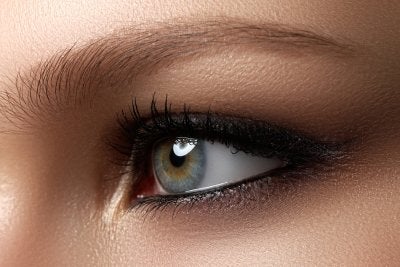
Identify the Risks of Eye Injuries
A couple of the main causes of eye injuries are airborne particles and chemical exposure. Eye penetration can be caused by objects falling off scaffolds, sparks from welding equipment, and blown sawdust. Other objects may swing into a worker’s eye, such as chains, ropes, and tree limbs. Similarly, chemical eye burns can cause permanent damage, especially if the caustic chemical penetrates to the deeper layers of the eye. Chemical eye injuries can be caused by a variety of substances, including potassium, lye, magnesium, ammonia, sulfuric acid, hydrochloric acid, plaster, and cement.
Reduce Hazards in the Workplace
Identifying the potential causes of eye injuries at your jobsite is the first step toward protecting yourself and other employees. Next, talk to your employer about the safety precautions recommended by your ophthalmologist. Your employer may need to add machine guards, safety screens, and caution flags. High-risk jobsites should have an emergency eyewash station that is fully stocked with sterile eyewash solution. Employers have a responsibility to train each worker to follow safety precautions and to know how to respond when an eye injury does occur.
Wear Protective Eyewear
Protective eyewear can prevent most of all eye injuries that occur in the workplace, but only if it’s worn consistently. Every employee should have access to the appropriate eyewear for a task. These include goggles, face shields, welding helmets, and safety glasses with side shields. All personal protective equipment in the workplace must be OSHA-compliant.
-
How Intraocular Lenses Can Address Your Cataracts
Cataracts usually develop very slowly. These cloudy areas of the eye’s lens cause blurry vision, double vision, and sensitivity to light. When your symptoms start to interfere with your daily life, it’s time to visit a cataract surgeon near Chicago. During your cataract procedure, the cloudy lens will be removed and replaced with an intraocular lens (IOL). This lens is a flexible, synthetic lens that functions just like a natural, healthy lens would. It receives light and focuses it on the retina at the back of the eye. This allows your brain to receive images via the optic nerve.
Your cataract surgeon can walk you through the types of IOLs available to you. He or she might suggest an aspheric IOL, which mimics the natural variations in the curve of the eye’s lens. This could help you enjoy sharper vision. On the other hand, your ophthalmologist may recommend a toric IOL if you have nearsightedness, farsightedness, or astigmatism. This lets you see things clearly, without the blurriness that astigmatism causes.
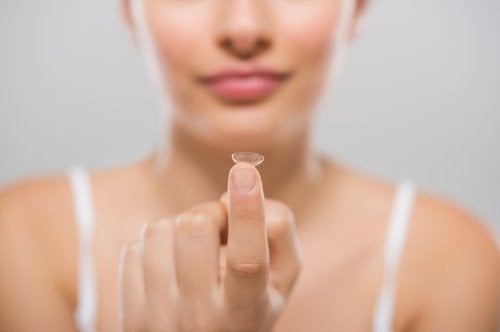
-
What Patients Should Know About Cataract Surgery
Some people can’t even touch their eyeballs, so the prospect of cataract surgery near Chicago might seem a little scary at first. Do a little research about the process , and talk to your cataract surgeon so that you know what to expect. This can help you prepare, which can then make you more comfortable. You should know why cataract surgery is important, how to get yourself ready, and what you’ll experience when you meet with your eye doctor. Here’s a closer look at what patients should know about cataract surgery.
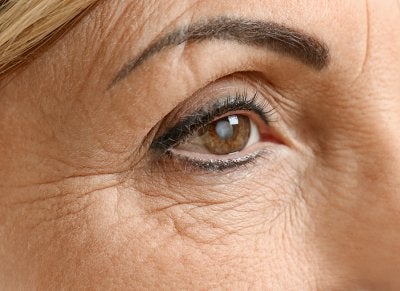
Reasons You Should Deal with Cataracts
Just like on a camera or a microscope, the lens of your eye helps you focus an image so that you can see it clearly. When you develop cataracts, however, the lens clouds up and becomes blurry. This can be distracting and takes away from your ability to appreciate a beautiful sight, so it may significantly impact your quality of life. There are steps you can take to gain your vision back, and your eye doctor may recommend cataract surgery. This procedure can restore clarity and color to your vision so you can enjoy life’s scenery the way you always have.
How to Prepare for Surgery
Before you get started with cataract surgery, your eye doctor will explain how intraocular lenses—or IOLs—work and what to expect when you go in for treatment. He or she will need to take measurements in order to create the right IOL, and you will need to tell your eye doctor about any medications that you’re currently taking. In some cases, you might have to refrain from taking these medications for a certain period of time.
What the Procedure Is Like
You might need to refrain from eating prior to cataract surgery. After numbing your eye, your doctor will carefully cut near the cornea to access the lens. The goal is to break down the cataract and replace the lens with an IOL. Your incisions should heal on their own, so you most likely won’t need stitches. After about a half hour in the recovery area, you can leave.
-
Keeping Your Eyes Safe Around Fireworks
Summer is the season for dazzling displays of fireworks, and the Fourth of July tends to be the pinnacle. If you want to be safe and keep your eye doctor in Chicago happy while you enjoy the view, be sure to practice proper eye care . Look at this video clip for tips on keeping your eyes safe around fireworks.
There’s a lot to love about the summertime, from days at the beach to ice cream cones in the backyard. For many families, it’s tradition to go out and see a fireworks show on the Fourth of July. Fireworks can be beautiful, but they’re equally bright. If the light gets to be too much, consider putting on a pair of sunglasses. You can also try to distance yourself from the spectacle to avoid such intense exposure. Whether you prefer sparklers, bottle rockets, or firecrackers, practice proper eye care.
-
Eye Protection for Tennis Players
If you play tennis or plan to learn how, it’s time to schedule an appointment with an ophthalmologist. At an optical center in Chicago, you can learn about the specific risks associated with tennis, including eye injuries that may cause vision loss. Your ophthalmologist can recommend protective eyewear specifically for tennis. He or she will ensure that your eyewear fits you properly for maximum protection.
For more tips on eye care and injury prevention, watch this video. The eye doctor featured here explains that the polycarbonate lenses found in protective eyewear can block projectiles such as tennis balls, even when these objects are traveling at up to 90 miles per hour. She also discusses the importance of ultraviolet (UV) protection to guard against cataracts, lesions, and tumors.
-
What You Can Do to Avoid Eye Injuries in the Workplace
Workplace incidents are a common cause of eyes injuries treated by ophthalmologists near Chicago . In fact, about 2,000 workplace eye injuries occur daily in the U.S., and most of these are caused by small, falling, or flying objects. To avoid being among these statistics, consider the following tips for avoiding eye injuries in the workplace:
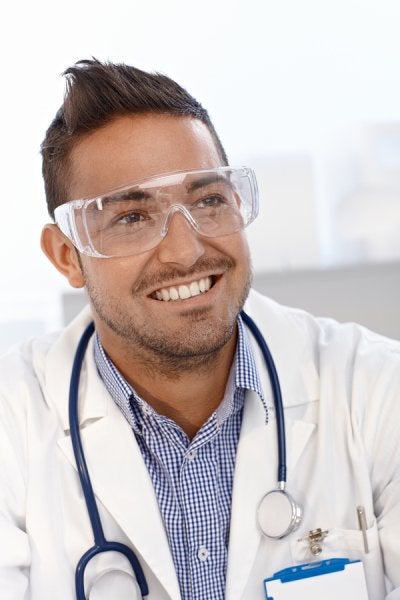
Promote a Safe Work Environment
Creating an environment in which accidents become less likely is the first step towards reducing the chances of eye injuries. To do this, ensure that all tools and equipment are working properly and that all necessary safety features are functional and in use. Next, inspect the area for unstable objects and similar hazards and remove or repair these. Also, ensure that bystanders remain out of hazardous areas, and that staff members know how to use every tool correctly.
Check Your Worksite Regularly
Checking your workplace once isn’t sufficient for preventing injuries long-term, so schedule regular evaluations. Inspect your work areas and identify hazards from machinery, falling or moving objects, and other workers. After evaluating any safety hazards, take action to eliminate or minimize them.
Wear the Right Equipment
Most workplace eye injuries occur where the use of safety eyewear is not required or is optional, and many people end up having to visit an eye doctor because they chose not to wear protective eyewear or used it improperly. Start by selecting the right protective eyewear for your worksite. Then, always check that the eyewear is in good condition before each use. Finally, ensure that protective eyewear fits properly and stays securely in place while you work.
Adhere to Smart Safety Practices
Before removing your protective eye gear, you should shake, brush, or vacuum away any dust or debris that may have accumulated on your head, forehead, or hardhat. Also, never rub your eyes with dirty clothing or hands. Finally, clean your protective eyewear regularly. Following these steps is a smart way to practice good eye care and avoid a trip to an eye doctor because of an injury.
-
What Are the Risk Factors for Glaucoma?
When was the last time you visited your optical center in Chicago to have your eyes tested for glaucoma by an eye doctor? If it’s been more than a couple of years, then you could be overdue for a screening. Read on to learn what puts you at greater risk for developing glaucoma.
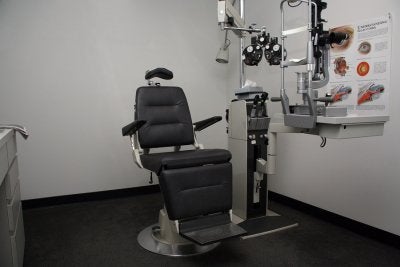
Age
Individuals over 40 are at a higher risk for both open-angle glaucoma (OAG) and closed-angle glaucoma (CAG), and your age impacts how frequently you should be seeing an eye doctor for testing. People under age 40 should visit an eye care professional every 2 to 4 years. From ages 40 to 54, see your eye doctor every 1 to 3 years. Individuals who are between ages 55 and 64 should have their eyes tested every 1 to 2 years. Once reaching 65 years of age, people should visit their eye doctor once every 6 to 12 months.
Race
Race has been linked to different types of glaucoma. People of African descent are at a higher risk for developing OAG than Caucasians, and people with East Asian ancestry are more likely to suffer from CAG than other individuals. Also, Hispanics in older age groups are at a greater risk for glaucoma. If you fall into one of these high-risk groups, then consider seeing your eye doctor more frequently.
Family History
OAG is the most common form of glaucoma, and both it and CAG are hereditary conditions. This means that if you have immediate family members who suffer from glaucoma, that you should be seeing an eye doctor for testing more frequently than you would otherwise because you have a much greater risk of developing the disease.
Other Factors
There are several other factors that can increase your risk for open-angle glaucoma which include having high pressure in the eyes, having diabetes, and having prior loss of vision due to glaucoma. Additional risk factors for closed-angle glaucoma include being female, having farsightedness, and having CAG in one eye. If any of these risk factors apply to you, then speak with your ophthalmologist about how often you should have your eyes checked for glaucoma.
-
Keeping Your Eyes Safe This New Year’s Eve
Your ophthalmologist near Chicago will tell you that the holiday season can be particularly hazardous for the health of your eyes. To help avoid an accident, continue reading to learn how to practice good eye care this New Year’s Eve.

Champagne
If you’re like most people, then you intend to ring in the new year with a champagne toast during your holiday party. To make a great impression on your guests, learn how to open a champagne bottle like a pro, something which does not involve flying corks. The uncontrolled release of a cork from a bottle of sparkling wine or champagne can reach up to 50mph, making it a serious eye hazard, according to eye doctors. You can help protect everyone’s eyes at your party by learning to safely open champagne.
Fireworks
A frequently underestimated New Year’s Eve tradition, the use of sparklers is one of the leading fireworks-related causes of emergency trips to an eye doctor. For this reason, their use should be approached with the same level of caution as fireworks. To use sparklers safely this holiday, only light them outdoors, light only one at a time, point sparklers away from your face and those of others, and always keep a bucket of water nearby. As for fireworks, do not touch unexploded fireworks, always wear protective gear when handling fireworks, and respect all safety barriers at fireworks shows.
Poppers
For many people, a New Year’s Eve party is lacking if there aren’t party poppers involved. If you plan to celebrate with party poppers this holiday, keep in mind that they can cause eye injuries if they aren’t used with caution. First, always point party poppers away from your face and those of others. Second, avoid trying to fix poppers that turn out to be duds because there is a chance that they will explode in your face while you’re working on them. Finally, never allow children to use party poppers alone and be sure to instruct them on their safe and proper use.
-
How to Provide Your Eyes with Sun Protection
Your eye doctor will tell you that consistent eye care is key for promoting sharp vision long-term. Many people realize the importance of protecting their skin from the sun, but they never think to provide the same for their eyes. To practice good eye care near Chicago, watch this video for some helpful tips on protecting your eyes from UV rays.
When your eyes lack sun protection, this can lead to vision loss, cataracts, wrinkles around the eyes, and eye and eyelid cancer. For these reasons, eye doctors recommend that people wear sunglasses with dark lenses that completely cover their eyes and block 99% of both UVA and UVB rays. Also, wearing a wide brimmed hat, wearing contact lenses that have UV protection, using sunscreen, and staying in the shade between 10 am and 4 pm can help protect your eyes from the sun.
